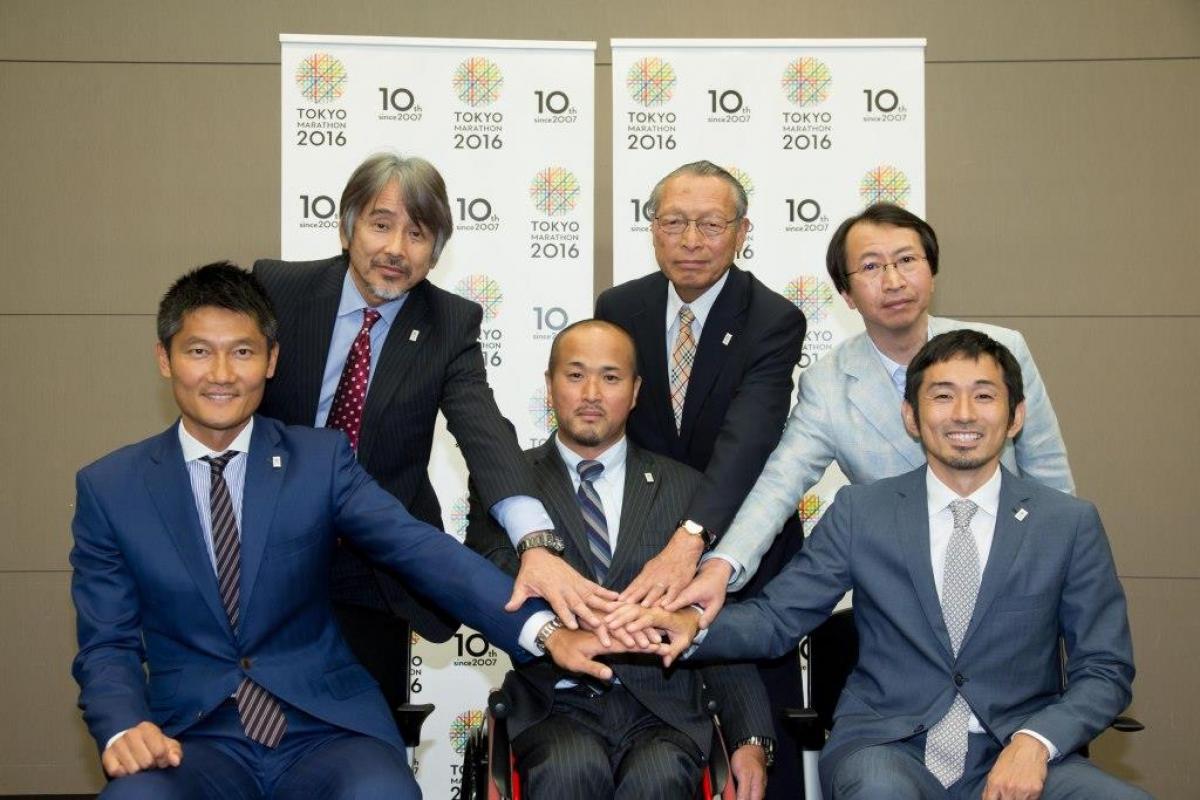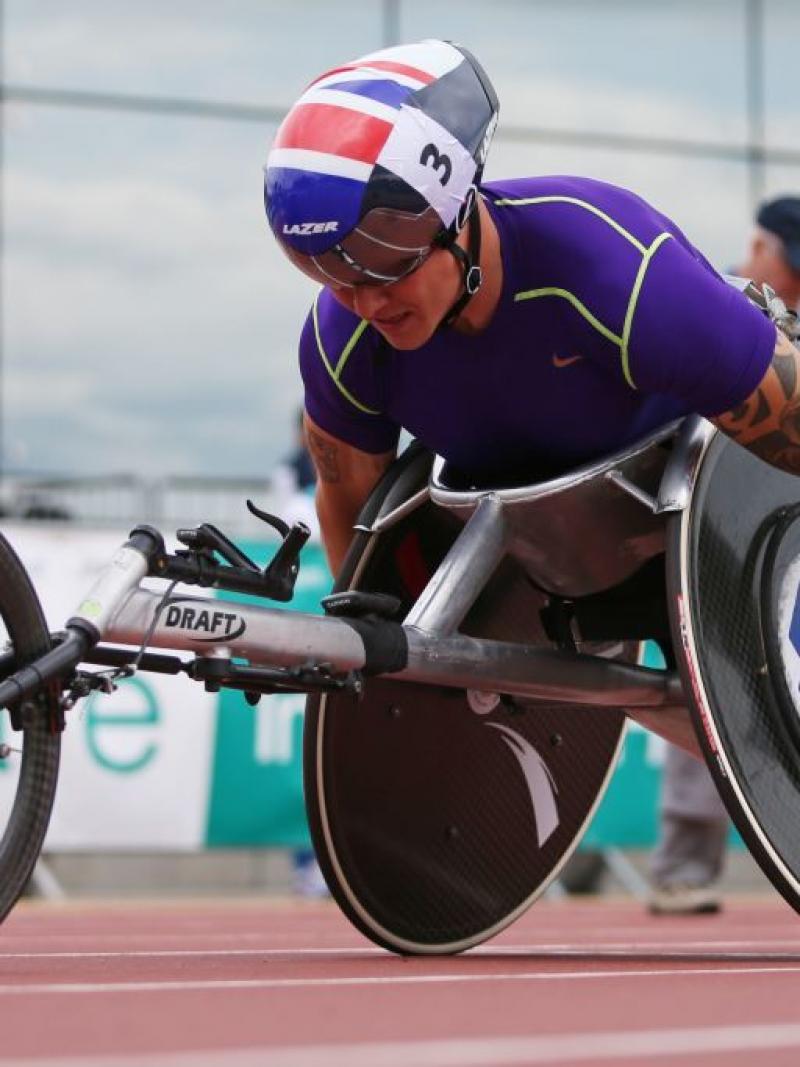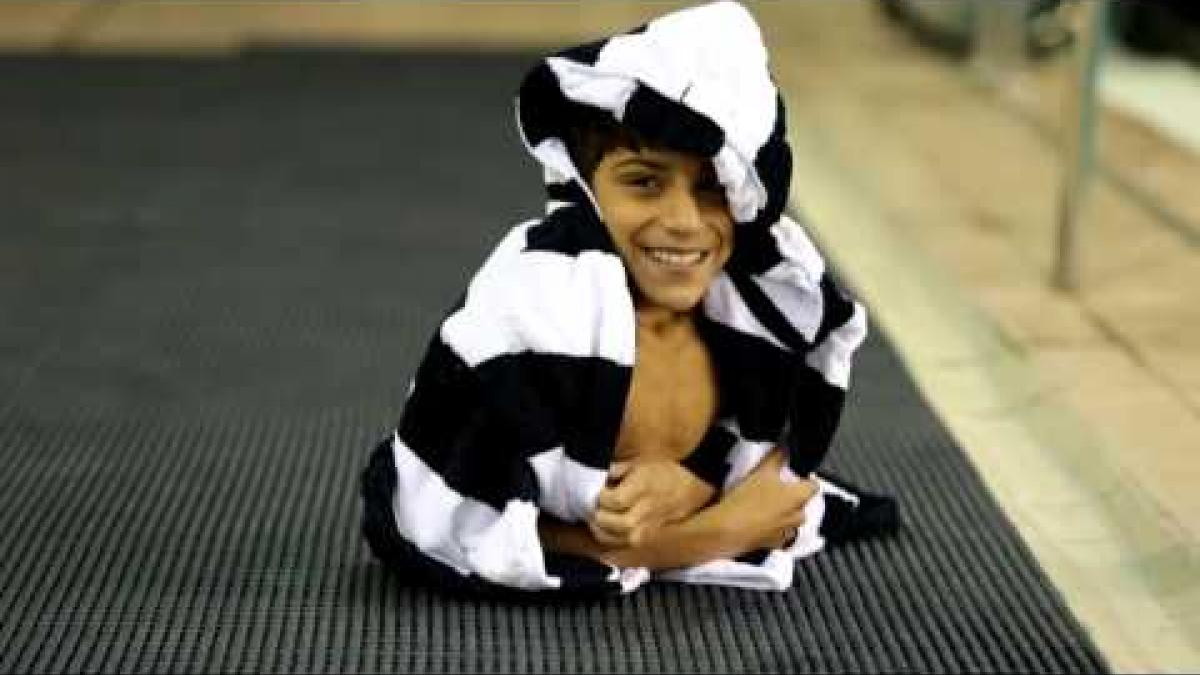Soejima wants legacy outside athletic performances
The Japanese veteran also serves as race director for the Tokyo Marathon’s wheelchair division. 21 Oct 2015
Masazumi Soejima at a press conference.
“My dream was to create opportunities for athletes by showing them a new career path for wheelchair racers.”
Japanese wheelchair racing veteran Masazumi Soejima is doubling up – but not in competition events. Soejima is maintaining his athletic career while also serving a new role as a race director for the Tokyo Marathon.
While Soejima is aware of the dedication demanded from both sides, he wants to leave a legacy outside his athletic accomplishments.
“My dream was to create opportunities for athletes by showing them a new career path for wheelchair racers,” Soejima said. “I am happy to be both competing in races but also working behind the scenes to make events.”
In February 2015, Soejima finished fourth at the Tokyo Marathon 2015 in the men’s wheelchair division. He followed that up with third-place finishes at the Boston Marathon, London Marathon and Seoul International Wheelchair Marathon.
He has his sights set on Rio 2016, as he is preparing for the Oita International Wheelchair Marathon on 8 November to be held on his home island.
From there, Soejima hopes to secure a ticket to the Rio 2016 Paralympic Games by coming in first.
On the other hand, he is also serving as race director for the Tokyo Marathon 2016’s wheelchair division.
“As a wheelchair race director, I want the Tokyo Marathon [to become] the race that can set a new world record and also develops young athletes through the event,” Soejima said. “I also aim to start charity events in the future that would be managed by para-athletes.”
Athletes have to decide what to do after retiring from their sport, and Soejima wants to set an example on how they can expand their opportunities..
He knows that his experience as a top athlete would work well as race director of the Tokyo Marathon 2016, which will be held in February.
In that role, he wants to boost aspects of safety, technical issues and the quality of the recruiting process for athletes.
He said his ability to manage both athletics and work is aided by the support he receives from his colleagues.
By also serving as a wheelchair race director, Soejima hopes his efforts can go a long way in helping Rio 2016 boost momentum for Tokyo 2020 and change people’s mindset about para-sports.
“People still see me as just an ambassador of the Tokyo Marathon,” Soejima said. “However, I will try to promote the excitement of Tokyo Marathon for wheelchair runners as a wheelchair race director. I will also pursue results as a professional athlete”
The Tokyo Marathon is one of the first major marathons to assign a current athlete as the race director of the wheelchair division; the Boston Marathon, London and New York also have people dedicated toward running the wheelchair divisions. Soejima wants fans to expect more race tactics and intensiveness at the new Tokyo Marathon Wheelchair Division.
More information on the Tokyo Marathon 2016 can be found at the event website.

 Facebook
Facebook
 Instagram
Instagram
 Twitter
Twitter
 Youtube
Youtube


